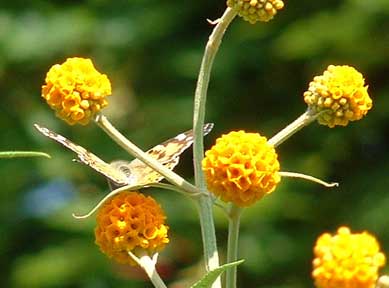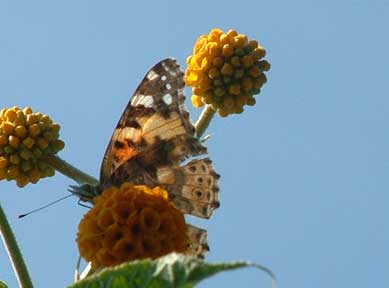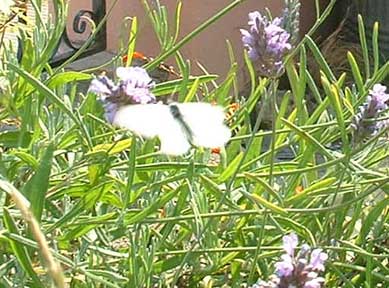Flutterby Butterfly
Flutterby, Butterfly - the importance of butterflies & moths

It's the same old story: many butterflies’ and moths’ feeding and breeding grounds have been lost to housing and shopping centres and the indiscriminate use of garden sprays.

Butterflies and moths are important as plant pollinators and as food for other animals, birds and insects. Kill a caterpillar and the 'knock-on effect' can be disastrous.
I thought moths only flew at night, but have since learnt that many flitter around the garden during the day, adding to the confetti effect.
I used to want to name them all and as soon as I saw one, I would collect my identification book(ugh,even the word looks sinister) and anxiously rustle through the pages - trying to match colours and wing patterns (get a life, Jan!). Now I just stand or kneel around and marvel at them. How do those tissue paper wings survive for even a day? No lips, no teeth, just a rolled up tongue, that unfurls to gather nectar. Huge eyes to see with and an antenna to feel with. Not a squeak or a squeal, not a sound, no noise at all.
Are they content as they flutter through our garden? Who knows - but at least some are there and they are wonderful.

Butterflies and moths need nettles and thistles in a quiet, sunny corner to tempt a few to lay their eggs (they are very fussy),ivy, holly or a tree to roost in. They are attracted to daisy-like or flat-topped flowers with red, yellow, orange, pink or purple blossoms and they adore Buddleia racemes. Clump such flowers around the garden - you know how flutterbies (as my granddaughter called them) like to do just that - they are not grazers or browsers, so space those marigolds, thymes, lavender, golden rods etc out at intervals, so they can dance from one to another. If you only have a window box or an empty ledge, a saucer of glucose water tempts them too.

Right now, I await a Red Admiral (I always fancied sailors). This butterfly will hopefully arrive in this garden after crossing the English Channel. It will then make its way along the green corridor that stretches from the Pavilion, through Victoria Gardens, The Level, Park Crescent, Wakefield and Richmond Road and then on to the Cemetery - the best place in Brighton to see butterflies.
It's crossed the Channel to get here, for goodness sake - dig in a nectar plant quick, he must be famished!